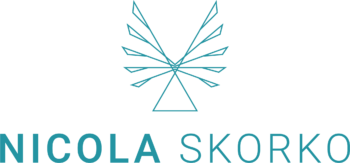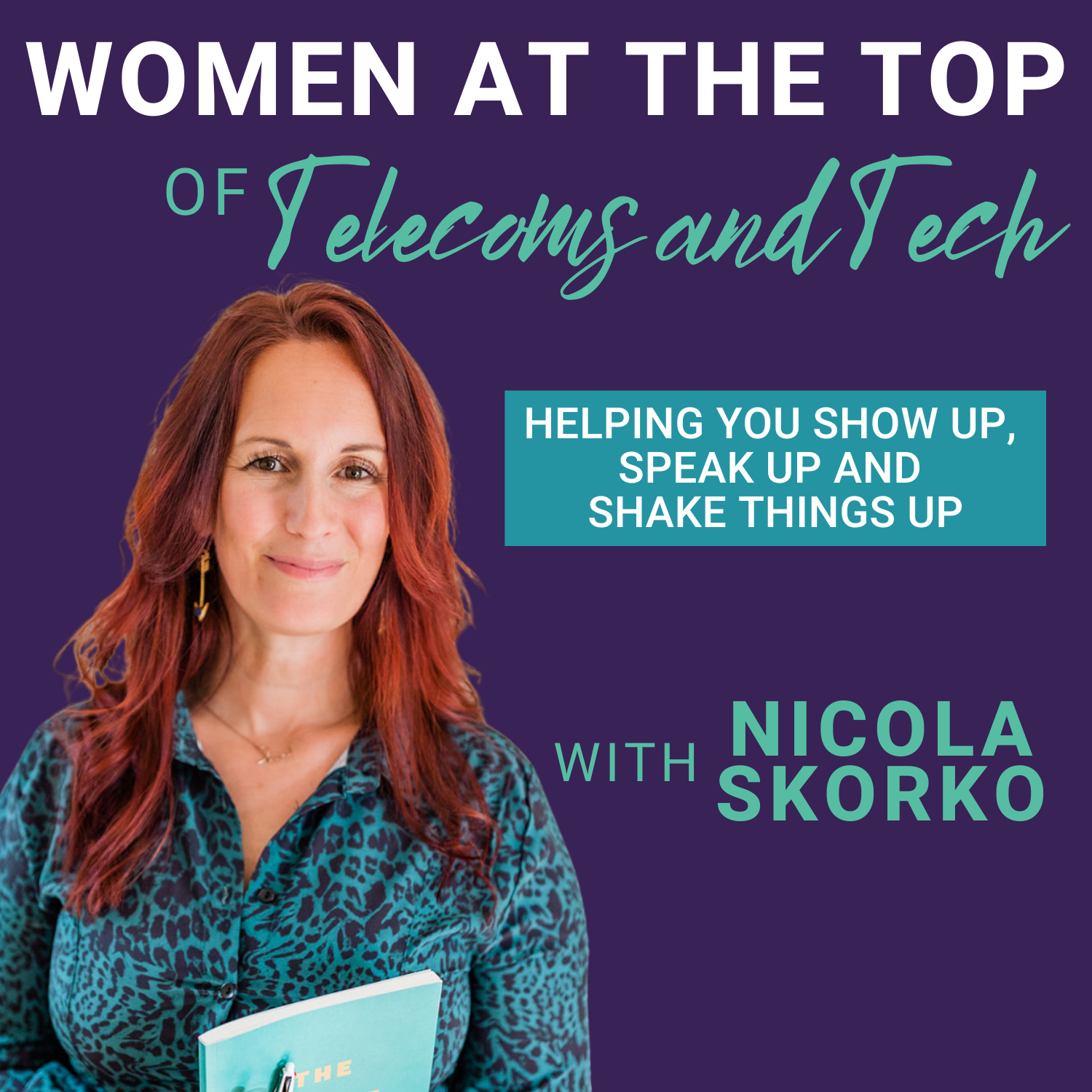Ep 096: How Organisations Are Supporting Women
Today, I wanted to look at what challenges women are facing in organisations, explore what they are struggling with and really get a temperature check on what is going on for women in business and the support available to them.
So, with that in mind, in this episode, I look at how organisations are supporting women and what more needs to be done.
Here are the highlights:
- (3:56) How to support women and drive policy change.
- (5:58) What needs to change to create a more inclusive culture.
- (7:46) Looking at the human style of leadership.
- (9:56) How to create a more inclusive company culture.
- (11:59) Best practices in the workplace around creating more inclusive cultures.
Register your interest here and be the first to hear when the new podcast is live.
Transcription
Nicola 00:09
Hello, and welcome to today’s podcast. The podcast is women at the top of telecoms and tech, and I am your host, I am Nicola Skolkovo. I am the coach that works with organisations helping more women to those most senior roles to lead change, to create more inclusive cultures that are safe and fair for all. So welcome to today’s episode, I’m really happy that you’re here. So just a little bit of context, if you’re new to the show, if you’ve been listening for a while, so these are episodes that are a little bit shorter. And we are essentially saying goodbye to the podcast. So we will be launching a new podcast imminently. But what we wanted to do is we want to go out on a high, and just recognise that 100 episodes in, we will close this podcast be starting a new one, but we want it to really just take some time to reflect back. So we’re going to be sharing an episode. That’s all the best bits of the interviews, and also my solo podcast, we’re going to have an introduction to the new podcast, we you probably if you’ve listened the last episode, that was all about the change that’s happening and why my message broadened out and why my business is shifting. So why it was the right time to stop this podcast and start a new one. And this is one of the smaller, shorter episodes, this is going to focus in on the four different subjects and areas that I’m really focused on talking about in the new podcast just to really get you excited to bring you on that journey with me. And also to get your input into what you would like to listen to what you would like to listen to me talking about are there any guests you think would be brilliant interview? Are there any things that you’re struggling with, that I can help you with? Just open it really just for open it up to really just share the gist with my thinking changing and kind of restructuring my business. Actually, I think where we are, it’s also recognising that where we are in the world work in the corporate world especially is really, really changed. So just really sharing, though, for different areas that can be focused on in the podcast, and also in the content that I’m sharing and the work that I’m doing with organisations. So on the first episode of this, we talked about women leading inclusivity inclusively. And what that would mean and what the focus that would be, and today we’re going to focus in on the second subject arrow, which really focuses on how the what’s the lived experiences of women in organisations? And also what’s, what are the barriers and the best practice to get in more senior into those most senior roles? What are what things are working brilliantly what structures, what support system, what development and training is working in is repeatable for women that are also those future stars, to really close that gender pay gap and get more work more women into those most senior roles. But also, what’s the lived experience of those women currently, what is going on in the corporate world? What are they seeing? What are they thinking, what are they feeling? What are they doing? What challenges are they facing? What are they struggling with? And just really understanding just it’s almost like a bit of a temperature check on what is going on? And what’s what is the experience of women in organisations right now? And what the structures that are there to support them for better work experience, but also for engagement. So what are we going to be talking about? Within that, we’re going to be talking about things like women’s networks, for example. So I’m a huge advocate of women’s networks. Absolutely. But as much as I’m a huge fan, because it brings into focus, just how to support women, it helps you to understand their lived experience, it helps drive policy change, seeing why that’s needed. It helps also drive retraining and behaviour change around maybe unconscious bias around nudging male colleagues in the organisation on their language on their assumptions. But also within that, just really recognising that having a separate network that focuses on just women, is that a less about inclusion, actually potentially driving more exclusion. So just some really honest conversations and not to pit down. And not to say that that’s an outdated model. Not at all, but just to kind of have that debate and raise the subject around. Actually, where is that worse? Are they helping or they hindering and also looking at just really leadership programmes, so where are you just burning money with leadership programmes? Where are they really Alienware, are they wasted money in an investment that just there will be no return on investment. And within that as well, where are they overly expensive? Where are they actually incredibly impactful? which groups are they particularly working well with? And what else needs to change? So does policy process needs to change? Is it around creating the really strong awareness within male colleagues and their behaviour needs to change in their language? Is it actually that the business structure itself needs to change in terms of how people are bought in and recruited? What’s their lived experience for the organisation? Is it that you need to retrain your entire board so that they step past their stereotypes that you might have had because they’re of an older generation? Is it about really looking at making sure investors are not only looking for that return on their investment, but they’re also looking to work with organisations that are really they are socially aware, and they are making a positive contribution to the world. And it’s really about that shift away from almost that a sense of fixing women and empowering women and developing their skills. And it’s really on women to drive this and owners? Yes, I agree with that. That’s a second. That’s the first area of focus to work with women to help them to have the skills, the resilience, the determination, the confidence to really get to those most senior levels. But this subject area is really going to focus on what needs to change. Do we need to dismantle some of the structures that aren’t working? Do we need to help women clear those invisible landmines that they they might unwittingly be treading on? What needs to change to be create that more inclusive culture? So is it outdated attitudes? Is it behaviour that’s now an appropriate? How do you set up a culture that is that employees know that they’re safe to report that or to challenge that and choose to change that behaviour. But it starts with them knowing that they’re safe enough to challenge even someone at a more senior level, potentially? And also with employee support groups again? Did they bring those communities close together? Or is that another point of exclusion? So what are the best practices that are incredibly powerful? And what are the barriers that they might be creating? So this is the second area that we’re going to really focus in on. And we’re going to look at how to really tackle that different treatment of men and women. So we’re going to be really looking at how to dismantle those structures that are working and how to sweep past and clear down those invisible landmines that women might be stepping into, and how to bring men on the journey with us to create that really that much more inclusive culture that safe and fair for all. And as part of that as well, just looking at that human style of leadership and making sure that from the top down is that that sense of leadership being about caring about each other. And actually, if you go back to podcasts that I recorded with incredible lady for, based in America, because Stephanie Okamoto, and she created Microsoft’s management programme, and at the heart of that management programme is care and actually having a consistent experience for all employees around their experience of being managed. And at the heart of that is the lead word that is care and the care management programme. So how do you create that at the very top? And how do you make sure that filters down across the organisation? So really, this is around identifying those structures? In organisations? For women? It’s around what is the different experience lived experience between men and women? What is the difference? Again, in language, what is the difference in an attitude of if a guy’s coming back from paternity leave, it’s as business as usual. Whereas for women, it’s that loss of identity and confidence, but also an assumption that being a new mum, they might not be as ambitious. So they don’t want that big company wide project. They don’t want that new international posting for examples. So it’s looking at that different treatment of men and women, and making sure that organisations have that insight. And they have ways of looking at that and understanding that, because that’s the second stream of work that we talked about the second second road, if we’re on the road to inclusion, the second road that we need to travel down, yes, women and empowering them. That’s all great, but that’s an assumption that almost we can fix this through working with women alone. And that’s not true. Because we also need to work with men. And we also need to work with and focus on dismantling structures that are outdated, those invisible landmines of people’s attitudes and stereotypical assumptions and where there’s just absolute weather is sexism and misogyny still in the workplace, how to recognise that and how to change that. And none of this is about blame. None of this is Without judging anyone or anyone’s behaviour, it’s about being very, very clear, from a company perspective, what is and isn’t acceptable, that will help create that more inclusive culture. And I think the key word here is around feeling safe. So having support structures and way of engaging employees so that they know that they’re safe to speak up, knowing that they’re going to be heard, and they’re going to be respected for sharing, being open, honest enough to share their perspective. And also, how do we, how do we help organisations really create policies, processes, procedures, and structures to really develop that, that culture of equity and fairness of opportunities for everyone. So this is the second area that we’re going to be focused on. And I’m really, really excited to just really start to bring this sort of content to you and be talking about this more and more. And also, as part of this, the really challenging on just the assumption that you can make an inclusive culture or wellbeing focused culture through a fruit bowl in the kitchen and a massage every month in the office, or a team away day. And it goes much, much deeper than that. And how do we make sure there’s consistency or communication? How do we know that there’s clear expectations? How do we know that we’re being consistent in the behaviour that we’re looking for from employees? How do we tackle things like ageism? And why that’s more of a fight for women than it is for men? Why are women not reentering the workforce after they’ve had children? How do you make sure that your organisation is a corporate really social responsible one? And what can you do for lower costs or no costs. So that’s the second area that we’re going to be focused on, which I’m really excited to talk more about, and share with you. And I would love to know what you think, because I want you to bring you into this journey that I’m going on. And I would love to know what you see, as best practice in the workplace, around creating those more inclusive cultures, what structures and policies and processes and training and development Do you see that works brilliantly? Well? And what do you see where money is just being burned, and it’s not hitting home, and it’s not having the impact. It’s almost that contrast between the very best practice and just the barriers that are still there that you might still be experiencing. So if it’s something you have a perspective on, if you have ideas that you would like me to talk about, and include, just drop me an email, all my details are in the shownotes. I would love to know what you think. And if you’re an organisation that’s struggling with this at the moment, do drop me an email, to book a quick get to know you call and just to understand more about what’s going on so that we can, we can know how that we can help you as an organisation. So that’s it for today. Thank you for so much for listening. And I will see you on the next podcast. Thanks, bye. i Is Nick here. I just want to take a moment just to say thank you for listening. When I’m sat recording the podcast in the deepest depths of Como is incredible to think it is reaching women across the world in 30 different countries and we have 1000s of downloads a month. So thank you so much for being part of that. And being part of the audience means the world to me. But I do want to grow this audience, I would love you to help me reach more women like you so that we can really drive positive change in the corporate world. So you can do that one of three ways. First of all, you can subscribe to the podcast, you never miss an episode. It’s always a new episodes always delivered straight to your inbox. You can review the podcast and leave us a rating and the more ratings we have, we also go up and the podcast charts. And finally you can just share a favourite podcast with a peer with a colleague or on social media. So I would love you to do that. Thank you for all your help. I can’t wait for what’s next
Ask Nic…
Do you have any questions, or maybe a topic you would like covered in a future episode of the Women at the Top of Telecoms and Tech podcast?
Send a message directly to Nic below!




